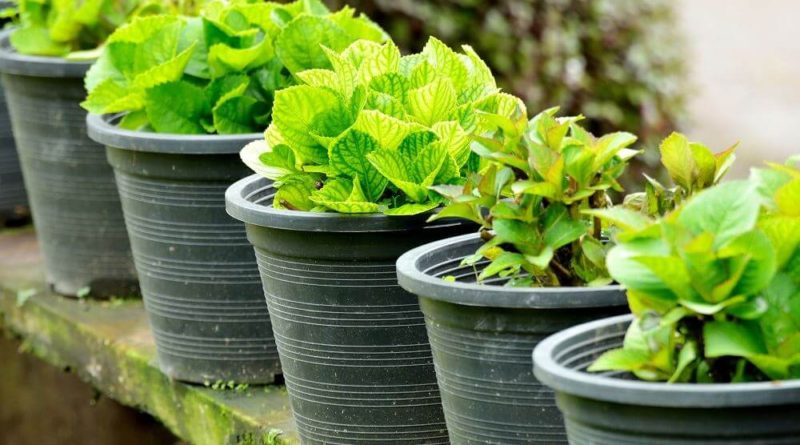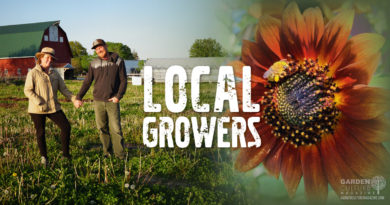Organic Gardening: More Convenient Than Ever
For most of agricultural history, organic gardening was the only practice available to farmers. They were limited to natural fertilizers like manures and practices like crop rotations to deal with infertile soils.
Since large-scale factory farms and synthetic fertilizers, herbicides and pesticides have become commonplace, it is easy to forget that many of these modern practices have only existed or been widely available since the 19th century, with many of them existing for less than 100 years, whereas the efficacy of organic gardening has the weight of historic evidence behind it.
Returning to agriculture’s roots is more than doing away with synthetic chemicals in favor of bagged manures. Organic gardening means developing and managing a living ecosystem, not just churning out produce. Modern large-scale gardening is focused on speed and volume, with less concern for sustainability, nutrition and flavor. While bountiful fruits and flowers are the end goal for most gardeners, a product-oriented mind frame can have damaging effects on both the crops and the environment.
Email Newsletter
Join thousands of other growers who are already receiving our monthly newsletter.
Sourcing Your Organic Soil
Organic gardeners tend to and care for the soil as well as their plants. This is because good soil is packed with minerals and nutrients, and is also filled with microarthropods, microbes and fungi that have symbiotic relationships with plants. Conventional gardening ignores these vital relationships, and many conventional fertilizers and pesticides damage or strip the soil of these helpful organisms.
Certain microbes and fungi make plants more effective, which is particularly important in times of drought or high temperatures. According to the USDA’s Natural Resources Conservation Service, 1 tsp. of soil can contain up to a billion bacteria, and that’s not counting the fungal hyphae, protozoa, nematodes, arthropods and earthworms it contains. This incredible living ecosystem goes largely unseen, but its effects on plants are readily apparent.
Most bacteria act as decomposers, breaking down organic matter present in the soil, both freeing nutrients for use by plants and holding the rest in the soil system.
Other bacteria are nitrogen-fixing, converting nitrogen gases in the atmosphere into solid nitrogen in the soil. Mycorrhizal fungi live symbiotically with plant roots, increasing the root mass and absorption of water and nutrients. Protozoa help mineralize nutrients, while nematodes cycle nutrients and stimulate microbial growth. Arthropods help break down organic matter or prey on other arthropods that may attack plants, while earthworms mix and aggregate soil, increase infiltration, provide channels for root growth and improve the soil’s water-holding capacity.
Sourcing Your Organic Fertilizers
Natural fertilizers aim to feed the soil’s ecosystem along with the plant, while also providing structure to loosen soils, retain moisture and improve aeration. Organic matter exists as part of the cycle of renewal and decay, originating from once-living sources, such as other plants or animal meals, bones or guanos.
Natural fertilizers are meant to stay in the soil, and since they are part of the soil’s life cycle, being slowly broken down by microbes, fungi and the plant itself, they continue to provide nutrients for long periods. This means the N-P-K rates in natural fertilizers do not have to be as high as they do in synthetic fertilizers to provide the same or greater benefits.
Synthetic fertilizers are focused on feeding plants quickly and are not designed to last in the soil. Their continual use can have negative effects on the soil, turning the once-living ecosystem into an environment that is toxic for plants. Synthetics can also compact and destroy the soil’s natural structure, which prevents the growth of root systems and hinders proper aeration.
The high salt content of synthetic fertilizers is toxic to microbes and fungi, and the synthetic forms of nitrogen release ammonia gas, which inhibits seed germination and burns tender seedlings. Ultimately, continual use of synthetic fertilizers can make soil inhospitable to life, requiring extensive treatment or even replacement of affected areas.
While organic gardening is the oldest form of agriculture, the modern gardener doesn’t have to forgo convenience. Natural fertilizers and amendments are readily available at gardening centers, and they come in both single-ingredient and blended mixes.
Single-ingredient fertilizers allow gardeners to focus on particular plant needs or to create their own grow recipes. Different forms of bat and seabird guanos are readily available, as well as other exotic ingredients such as neem seed, kelp meal and Azomite minerals. Blended mixes allow for convenient, targeted feeding for particular plants and purposes. Both animal- and plant-based fertilizers are available, including pre-made vegan mixes for gardeners looking for alternatives.
No longer just bags of manure, these natural ingredients are sold in a variety of forms and are as easy to use and administer as their synthetic cousins. Dry fertilizers come in powders and meals, granulated and pelletized, so they can be spread over wide areas, mixed into soils or turned into foliar teas. As mentioned, natural fertilizers break down more slowly than synthetic varieties, but there are water-soluble and liquid options that will introduce nutrients immediately to plants. Mycorrhizal preparations can be purchased to supercharge the soil’s living ecosystem by introducing beneficial microbes.
Read More: How to Improve Plant Growth with Micro-Organisms
Additional Organic Gardening Methods
Natural fertilizers are just one part of organic soil management. Organic gardens are supplemented with composts, mulches and companion plants. Each technique works on its own, but together, they further fortify the ecosystem of plants and soil, protecting the garden without the addition of synthetic herbicides and pesticides.
Composts – Compost comes in multiple forms, many of which are derived from home and garden waste, which has been broken down to the point where its original form is no longer discernible. This is known as humus, and it is a highly complex substance. Humus is the ultimate stage of composting, and it will be spongy and dark.
Humus feeds and maintains the soil’s ecosystem, increasing its fertility, retaining its moisture and improving its structure. Compost can be made at home with organic materials from the home, like food waste, and the garden, like lawn or plant clippings, or it can be purchased at home and garden stores. Both types are high in quality and rich in nutrients, though making compost at home is a time-consuming process, as the materials have to fully decay before they are usable.
Mulches – Mulches play an important part in protecting the garden from weeds, soil erosion and changes in temperature, all of which will either damage the soil’s structure or biodiversity.
By covering the top of the soil, the mulch acts as a barrier to help hold in moisture that might otherwise evaporate. Mulches made from organic materials, like lawn clippings, peat moss or coconut husk chips, will break down over time and release nutrients into the soil, further enhancing the soil ecosystem, and will require additional applications to continue protecting the garden.
Cover crops and companion plants – Cover crops can help maintain your garden in the off-season by controlling erosion and breaking up compacted soil. Mowed and either tilled into the soil or left to decompose, they become green manure, decaying and feeding back into the soil.
Companion plants can be grown alongside primary crops to help repel pests or attract beneficial insects. Crops like beans have excellent relationships with nitrogen-fixing bacteria that will lock solid nitrogen into the soil for the plants’ benefit.
Read More: Nitrogen – The Essential Element and Its Forms
The Benefits of Organic Gardening
According to the Rodale Institute’s Farming Systems Trial, which has been ongoing since 1981, organic farms match the output of conventional farms, and in years of drought, organic farms outperform conventional farms. This is because, as the study shows, organic farms build and maintain the soil’s ecosystem, while conventional farms deplete it. At the same time, organic farms use less energy and produce fewer greenhouse gases than their conventional counterparts. Overall, organic farms are more profitable.
Ultimately, organic gardening is about gardening sustainably. The organic garden is supposed to function as a microcosm of the larger ecosystem, behaving as nature always has. Forests can’t turn to synthetic fertilizers to help themselves. They rely on the cycle of decay and the microbes and fungi inside of the soil. A good organic garden is about working as nature would. Organic growers work to enhance and reinforce the existing natural processes, not to subvert or replace them.
Read Next: Worm Tea – The Secret to Organic Gardening




